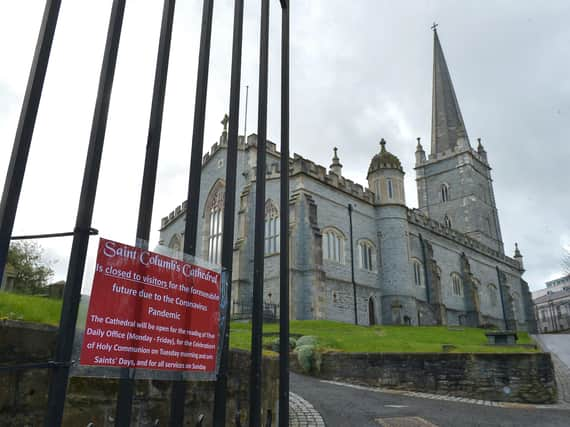Derry’s St. Columb’s hosted most weddings


A series of population projections and statistics on the number of births, deaths and marriages are contained in the latest annual report from the Registrar General.
The figures relate to 2019 and do not, therefore, take into account the impact of the coronavirus pandemic.
Advertisement
Hide AdAdvertisement
Hide AdThey show that even before the pandemic threw a spanner in the works of thousands of couples’ wedding plans, there had already been a significant decline in the number of couples choosing to tie the knot in general.
In 1989, there were more than 10,000 weddings registered. Last year, that had fallen to 7,255. The average age of brides and grooms has also grown in that time.
In the late 1980s, the average age for a bride was 25.8 while last year it was 33.4. The average age of a groom has also grown from 27.9 to 35.4.
The figures also contain some interesting statistics on the number of civil partnerships registered in the past year, with ceremonies involving two females slightly outnumbering ceremonies involving two males.
Advertisement
Hide AdAdvertisement
Hide AdOf the 103 civil partnerships registered last year, 57 involved a female couple and only 46 involved a male couple.
Meanwhile, the number of births to teenage mothers has fallen to a record low, with just 631. Ten years ago, in 2009, there were more than twice that number of teenage mothers - 1,334 births to those aged 19-and-under that year.
The average age of first-time mothers has risen slowly but steadily over the past three decades, from 25.2 years in 1989 to 28.9 years in 2019.
The overall population of Northern Ireland is set to continue to increase until the middle of the century, and NISRA say the upward trend is largely being driven by the number of births being greater than the number of deaths, rather than from factors such as migration from outside.
Advertisement
Hide AdAdvertisement
Hide AdA spokesperson for NISRA said: “In terms of population change, the estimated population of Northern Ireland rose by 12,000 people from mid-2018 to reach 1.89 million in the year. This increase can mainly be attributed to the difference between births and deaths.
“Projections indicate that the population of Northern Ireland will continue to grow until 2048 with a potential fall in overall population projected beyond that.”
The population is also becoming increasingly elderly across the north with pensioners now set to outnumber children before the end of the decade.